I wish to give some tips to the Indians who visit Japan for Work or Tour. This blog may give some information which may or may not be useful to many users. However thought I can blog what information I missed when landed in Japan.
Before you start from India check whether your home computer with Internet is properly working condition and connected with a Head phone microphone kits along. Also I suggest you to install the webcam setup in home. These will be helpful while you visit here in Japan or any other country outside India. Because it will reduce your communication cost and give you greater comfort with the family connected to you.
Keep it in mind that you may need to transact money from Japan to India after your arrival here, hence before starting itself make some arrangements with your bank for NRI account etc. If not get your bank’s swift code and information for the money remittance from Japan to India. As far as my knowledge lot of Indian banks operates in US and UK for Indian money transfer,but in Japan finding an Indian bank is real big problem. But State Bank of India and Bank of India are there in Tokyo. So, if you can please start an account in the core banking enabled SBI. It makes the life much easier when you are outside. I suggest while opening the account open with join account facility so your spouse or a family member can operate.
FoodFood is going to be a major issue for those who visit from India. Prepared to carry some ITC food packs if you are traveling to Japan on short tours. But for working community I suggest don’t think Japan’s rice and Indian rice going to be same, so carry as much as items like rice, Wheat flour, Chilly powder, Sambar mix, Turmeric powder, Tomato paste [as the vegetable cost going to be sky rocking for you, Single tomato will cost 160Yen in Japan ], Rice powder for Dosa and other essential food items. You can buy Ginger, Garlic, Onion, Coffee powder, Milk, Curd and some vegetables in the nearby chain stores in Japan in a reasonable price. But make sure to carry the above items as they are very important. Also, for Indian there are few Malayalee Indian shops here and there which provide some grocery supply. But traveling to those places regularly may not be a option, hence try carrying stuffs in your first trip. Secondly there is no need to carry Soap, Brush, Paste and other cosmetics as I find those are priced with same price tag of India. I hope that you know cooking. If you don’t then you are going to be in deep trouble, because the next option would be eating burgers and Japanese food.
Many of the Japanese foods are made with Fish, Noodles and Soya sauce. Hence I leave the decision to your own intelligence. Many of their meat look uncooked, but for sure I know sushi is raw fish puffed with rice. The cheapest western food burger will be available from Mc.Donald, however eating the fatty food everyday going to be a disaster to your body. The burgers starts from 80Yens and you will have to pay more for other stuffs.

Next in this section, let me tell you about water, especially if your water requirement is very high . Inside the office we have free coffee and tea not water. Which means you will be spending lots of money for water. A 500ml pet bottle of water may cost you 130yens. Remember Indians drink more water than other country people which means in Japan drinking the bottled water is another expensive treat. Kid’s food items are again not so easy with Indian food, so be cautious and bring them enough food. The cooking vessels, stove and electric rice cooker are available in the apartment hence no need to bring some of them from India.
ClothesIt is recommended to carry sufficient winter cloths like Sweater, Jerkin, Jackets, Woolen Gloves, Woollen innerwear, and cap etc. But no need to bring blazer and suites from India as the price in both the countries seems to be the same. Unless you have already some stuff at home, I suggest not buying anything there. May be your employer would have suggested to bring some suites as I have seen from cleaning labor to IT professional everybody wears suites. It’s not like our country where wearing a suite is a mark of marketing or higher position in the company; here it is a common wear so, plenty of them are available for discount sale.
Shirts and pants are also reasonably priced; you can visit lots of shops around to buy those things. Carry only minimal thing required don’t hurry buying things while your departure in India. For Indian Girls anyway no problem in wearing the Jean and top but for those who have not comfortable in this dress may be a problem. If you wear a salwar people may look at you in a different way. You will be odd among the crowd.
Another thing is that kids dresses are equally priced with adult dresses, hence if you are bringing your kids then bring their dresses too.
Life style items [Statutory Warning: Some items here in this subject are injurious to health]If your lifestyle requires cigarettes and if you are a smoker I suggest carry enough from India. A single pack of 20 cigarettes will cost your 320yens and not that strong. Though you will find enough alcohols in Japan for really cheap cost , if you are a Rum lover then you are getting into trouble. Finding Rum in Japan is a very difficult task, so carry “Old Cask” if you want. Otherwise you are a free bird tasting Sake, Soochow, Vodka, Scotch whisky, Brandy and Beer ofcourse.
Lots of perfume shops you will find when you visit the shopping malls, As per my opinion those are equally priced in India. In India, we do import these items from western countries only. For women the makeup items are plenty available in Japan, many Japanese females depend their life with the makeup kits.
Nappies and diapers are not so costly and you can buy them here. The handbag, ladies purse and belts are very expensive here, so Please carry them as much you want to use here.
ElectronicsAn important thing that everybody ask me, "hey will you get me this gizmo while returning from Japan as they produce it so it will be cheaper.?" Actually it’s a misconception as I have been the victim here. Because I didn’t carry my camera thinking that I will get a price advantage so I will buy it over here after reaching. But the situation is totally different; in Japan the electronic goods are much costlier than India. Let it be a Watch or a Camera or MP3 player or a Car DVD player or whatever. Hence if you have something there, and wanted to upgrade do it in India and bring it here for your use. Sometimes I have seen prices of the used items here are as close as our new products. Even if you buy those electronics here, you may end up having problems paying more money on our customs duty, also to be noted you will not get International warranty for many goods in Japan. If you want you need to pay even more Yens to get it international warranty endorsed.
Don’t bring film cameras as the developing and printing cost in Japan is higher than buying a camera compare to India.
MoneyYour money for the expenses may be used in the priority as stated below
1. Apartment or Accommodation cost – The single largest spending in Japan is going to be Accommodation. A fully furnished studio apartment may be rented from 1,70,000 yens. However this is the lowest, which means you may be spending an hour train travel to your work or the city.
2. Travel and Transport – Comes next to the accommodation, however there are options like monthly, daily, holiday and weekly passes for work and tour purposes. Even in that case the monthly pass usually consumes about 20,000 yens minimum. Then add other travel expenses for trips etc, so monthly the travel expense may jump over 30,000 yens.
3. Food – Reserve your cash for food about 30,000 if you combine with your bringing from India and self cook. If you don’t do that this will take the second place and each session of food may cost your 1000 yens approximately. This means 3000 yens per day per person.
4. If you work here and stay in your own accommodation, then Water, Electricity, Telephone, Gas and Cable TV will cost you a fortune some times the sum of these things will cross 30,000 yens per month.
5. Insurance – Stay insured while in work permit, but it will cost your about 40,000 yens. So I recommend you bargain with your employer even before accepting the offer. Demand them to take care of your insurance.
Miscellaneous InformationI know many of us are used to travel in some or other form of personal automobile vehicles in India like bike, scooter, car and auto etc. But in Japan getting a house with car parking means you may be a millionaire or staying in outside the city. Also you will get parking priced at 1000yens per hour. Then comes the toll road cost, most of your trip may cross so many toll road where in to travel 100kms you need to spend 10,000 yens, true but cannot leave it without stating. This makes no one from our country can even think of personal transport. Additionally the local Japanese themselves use bicycle and public transport for their travel needs.
In the office, you cannot expect the transparent behavior like what used to in our country. People act different inside and outside the office. The in-time to office is really a mandatory stuff but leaving early say exactly the closing hour may not be possible at all. The work culture is one which really sucks me here. Otherwise in the train, tourist spots, grocery stores, hotels and train stations the people are not so differently behave, some times there are very friendly outside.
The Japanese like dogs a lot. You will be amused to see Dogs wearing dress like a man. There are special shops for dog dresses like pants, shirts and ties etc. Its real fun seeing these people attached with their dogs.
I forget to tell an important information, which we are lacking and Japanese are always considered to be on the higher side. That is the time management; yes Japanese consider the time very much. If you travel in a Shinkansen the bullet train some times for change of another triain you may get 3 minutes or 5 minutes internal on your ticket. But it is a sufficient time here to change from one train to another. I read one of the blogger stating the station masters change time is logged with seconds not minutes. No bus, train, flight or a person is normally delayed, so if you are used of finding reasons with these things for your late attendance it will not be possible in Japan.
Hope this piece of information is useful to your Japan trip. Keep visiting back to this blogger for more information on my Japan experience. I have also posted some blogs on visits to some tourist attractions in Japan. Keep crawling my archive.
Visit me at: http://www.camera-friendly.com
 Actually I was wondering about the many Japanese cultural activities which are looked similar to me with those of Indians. In a way that is truth too, because of the Buddhism which spread to the world from the origin India. Other examples which proves my theory of understanding are the Sanskrit word usage in Buddhism even in Japan, The pagodas of various countries and the portable shrines etc. While I visited the Asakusa of Tokyo and Ueno park in the recent past, I have decided to learn more about the Pagodas hence this blog got its shape.
Actually I was wondering about the many Japanese cultural activities which are looked similar to me with those of Indians. In a way that is truth too, because of the Buddhism which spread to the world from the origin India. Other examples which proves my theory of understanding are the Sanskrit word usage in Buddhism even in Japan, The pagodas of various countries and the portable shrines etc. While I visited the Asakusa of Tokyo and Ueno park in the recent past, I have decided to learn more about the Pagodas hence this blog got its shape.  The wooden pagodas are the building with scientific ideas, each story [floor] of pagoda helps to prevent the rainwater falls away from the base of the tower, In addition the cascading of pagoda conical roofs helps preventing the rain water force from top to bottom which may cause earth slides.
The wooden pagodas are the building with scientific ideas, each story [floor] of pagoda helps to prevent the rainwater falls away from the base of the tower, In addition the cascading of pagoda conical roofs helps preventing the rain water force from top to bottom which may cause earth slides. Pagoda style buildings are not only by Buddhist also Hindus and Shinto religions were build for the temple structures.
Pagoda style buildings are not only by Buddhist also Hindus and Shinto religions were build for the temple structures.





 After spending couple of minutes looking at their devotional activities I have moved in the left side gate, there are lots smaller and bigger sized temple everywhere near the Sensoji temple. Lots of good landscaping was done for each temple in a different way. Some of the Japanese
After spending couple of minutes looking at their devotional activities I have moved in the left side gate, there are lots smaller and bigger sized temple everywhere near the Sensoji temple. Lots of good landscaping was done for each temple in a different way. Some of the Japanese 
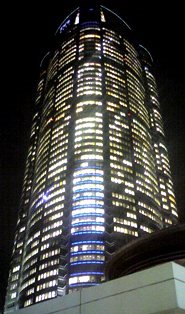
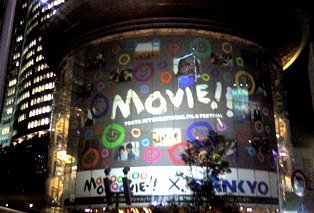











 It was said to be big no for having physical interactions like touching, kissing, holding hands etc in the public places. However it’s not fully true, as I myself have spotted several interactions during my stay here. In fact if they find a little private area, they make all such physical interactions in the public places. Holding hands and kiss are not so restricted in the trains. Especially in the crowded trains during peak office hours on can see many such actions by the young Japanese couple.
It was said to be big no for having physical interactions like touching, kissing, holding hands etc in the public places. However it’s not fully true, as I myself have spotted several interactions during my stay here. In fact if they find a little private area, they make all such physical interactions in the public places. Holding hands and kiss are not so restricted in the trains. Especially in the crowded trains during peak office hours on can see many such actions by the young Japanese couple.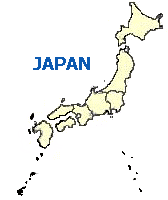

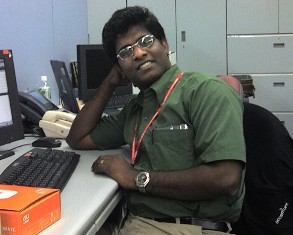 It was second week after I started working in my office in Tennoz at 14th floor; I was in a discussion with my co-worker on some technical study. I felt like somebody hitting the chair from back bottom portion. Turned real quick to see who is that, but before my head took the turn to see behind my chair I felt like the entire building was in a shake and continued to shake, a panic handshake me and a very strange experience. There was a dark line of scare just attached in my face; I got the dews of sweat on my face in a second. My muscle started loosing its tension, so many things in my mind popped up. Will I stay alive? I can’t use lift but running on the steps is also ruled out since I’m in 14th floor, how will I secure my family? The thoughts in my mind started moving on its peak speed, the blood pressure increased and I could feel the heat my body cells generated in a short duration of time. But my co-worker [Japanese] who was sitting with me in the discussion did not even bother about the shake, he continued to speak what he wanted to convey. It was a surprise to me, but couldn’t digest to hear that these shakes would happen in a regular interval. The Japanese co-worker was amused by looking at my fear, and said “no problem”.
It was second week after I started working in my office in Tennoz at 14th floor; I was in a discussion with my co-worker on some technical study. I felt like somebody hitting the chair from back bottom portion. Turned real quick to see who is that, but before my head took the turn to see behind my chair I felt like the entire building was in a shake and continued to shake, a panic handshake me and a very strange experience. There was a dark line of scare just attached in my face; I got the dews of sweat on my face in a second. My muscle started loosing its tension, so many things in my mind popped up. Will I stay alive? I can’t use lift but running on the steps is also ruled out since I’m in 14th floor, how will I secure my family? The thoughts in my mind started moving on its peak speed, the blood pressure increased and I could feel the heat my body cells generated in a short duration of time. But my co-worker [Japanese] who was sitting with me in the discussion did not even bother about the shake, he continued to speak what he wanted to convey. It was a surprise to me, but couldn’t digest to hear that these shakes would happen in a regular interval. The Japanese co-worker was amused by looking at my fear, and said “no problem”.

 Opps, this is enough there are many more I have seen over the window, this is the window provide all this in one sight. This is not a paid observatory not a tourist attraction but in my own office where we used to smoke.
Opps, this is enough there are many more I have seen over the window, this is the window provide all this in one sight. This is not a paid observatory not a tourist attraction but in my own office where we used to smoke. however due to the smaller wide angle capacity of the mobile phone I couldn't show all the attraction at single picture. I have just taken a picture which can be shown here with a minimal area of outside world that I see and enjoy daily. Look at this picture a monorail passing on while my favorite Crystal Yatch Club's boat floating on the water. Also in the distance spot the Harbor, the Odaiba island's buildings and shinkansen track but when I clicked the shot there was no train passing on . Thanks once again to the technology for make my desired wishes always on its path to reality.
however due to the smaller wide angle capacity of the mobile phone I couldn't show all the attraction at single picture. I have just taken a picture which can be shown here with a minimal area of outside world that I see and enjoy daily. Look at this picture a monorail passing on while my favorite Crystal Yatch Club's boat floating on the water. Also in the distance spot the Harbor, the Odaiba island's buildings and shinkansen track but when I clicked the shot there was no train passing on . Thanks once again to the technology for make my desired wishes always on its path to reality. 

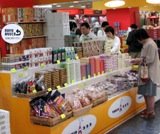

 In the entrance of the complex right side, you can see a small reception, and with a girl sitting for helping visitors with information. Good thing is that you will be able to get Engilsh guide
In the entrance of the complex right side, you can see a small reception, and with a girl sitting for helping visitors with information. Good thing is that you will be able to get Engilsh guide 

 After a few hours we moved toward the Akabanebashi station to return to the apartment.
After a few hours we moved toward the Akabanebashi station to return to the apartment.



 My internet search has also found some useful information about the dogs of Japan (the traditional Japanese dogs). Japanese seems to believe that the dogs of Japan have descended from the wolf. There was interesting story also found on the internet however the courtesy of this story goes to the respective people (The original information is found
My internet search has also found some useful information about the dogs of Japan (the traditional Japanese dogs). Japanese seems to believe that the dogs of Japan have descended from the wolf. There was interesting story also found on the internet however the courtesy of this story goes to the respective people (The original information is found 








